Related Content
Content
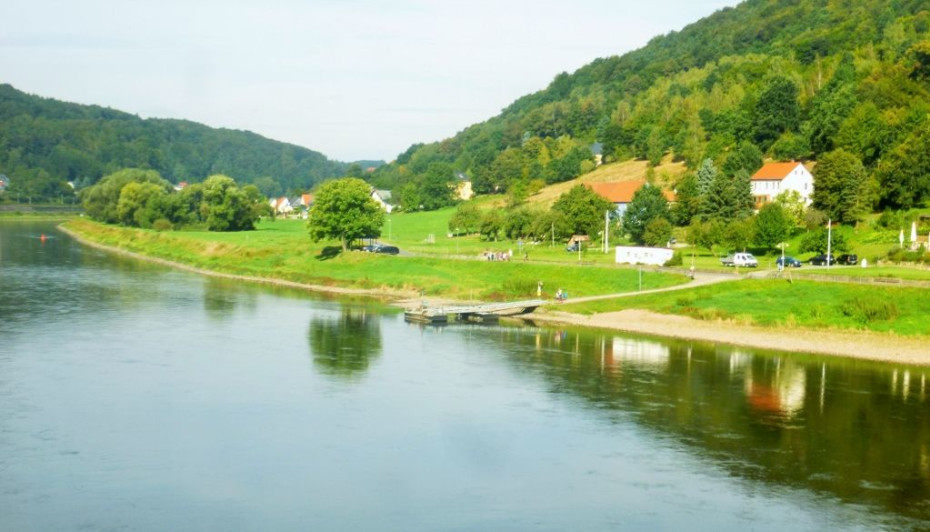
Episode 19: Deliberately going the long way round to Munich
I could have taken a direct train from the Czech capital to Bavaria, but on my quest to harvest tips and info I dedicated a whole day to travelling by train
Share
Back at Hlavni station on a Sunday morning, it was fairly obvious where I needed to wait for the details of the train to Dresden to be confirmed, as the only people in an otherwise empty shopping mall were those hanging around the area in which they could keep an eye on the train departure information.

These are some electronic screens located above a rather ordinary passage way which connects the mall to the trains.
I hadn’t bothered making a reservation for the train on to Dresden because I was using a First Class pass and a less obvious plus point of travelling First Class with Eurail and InterRail is that the First class accommodation on trains is invariably less busy than second class.
Hence I figured that I’d be likely to find some spare seats in First Class on the right-hand side of the train.
Despite reservations for rail pass users not being mandatory on the EC trains from Czechia to Germany, I would have paid up to reserve on this journey if I’d had a 2nd class pass, because on a previous ride on this route, second class had been so packed that the corridors between the coaches had an aura of a festival campsite.
So I was a man with a plan, get to Hlvani at least 30 minutes before departure, so that I’d be at the station nice and early to board the train and take my pick of the non-reserved seats.
But eight minutes before departure I was in a crowd of hundreds of people, who when the magic platform (track) number appeared on the monitors, proceeded to race off down the passage way which leads to the platform, as though a starting gun had been fired for a marathon.
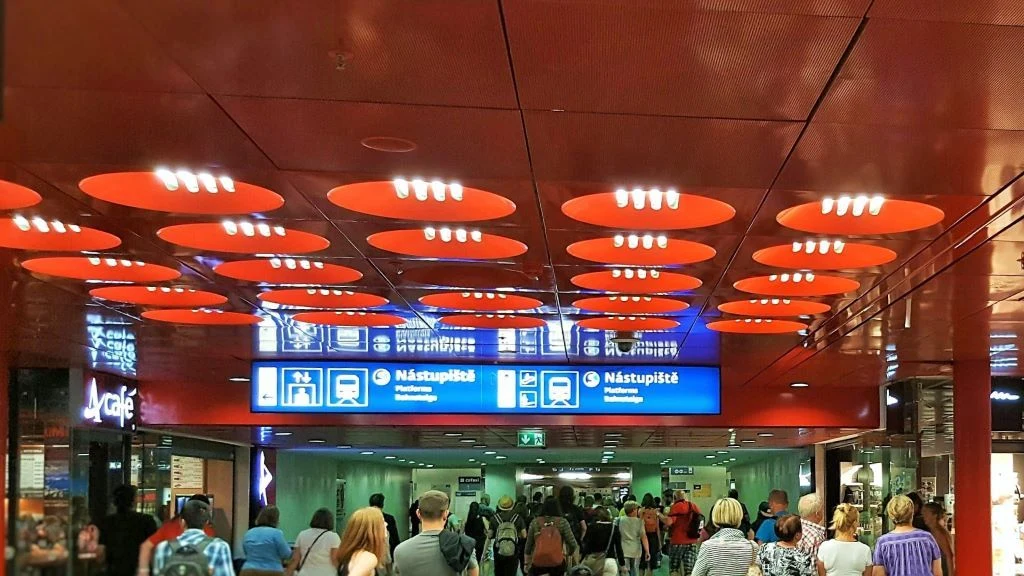
If I’d bothered to reserve a seat I’d have hung back knowing that my place on the train would be awaiting me, but as I hadn’t, I joined the throng.
Deciding that there wasn’t time to hang about for the elevator up to platform level, I heaved my bags up the stairs and then discovered, along with everybody else, that the train wasn’t yet in the station.
Though it arrived two minutes later, so the second part of the boarding the train against the clock game began, which was working out where the first class coach was, before anyone else did.
So the idea of leisurely strolling up and down the platform to take some photos of the lovely architecture, as this is the part of Hlvani which actually looks like a station, and some nice and useful images of some other Czech trains, had to be jettisoned.
Heading off to Germany
My morning instantly brightened when I did find what I’d been hoping for, a spare seat, facing forwards on the right-hand side of the train.
Then as soon as I sat down I remembered that I needed to go the bathroom and made a discovery which crashed my mood.
The closest lavatory was at the other end of the train’s restaurant car, which being a world’s leading train travel expert (ahem) I knew would be included on the train, but I’d made an assumption that on a Sunday morning it wouldn’t be open for breakfast.
So I’d already purchased some rather hideous rolls from the only food outlet which had been open in Hlavni station.
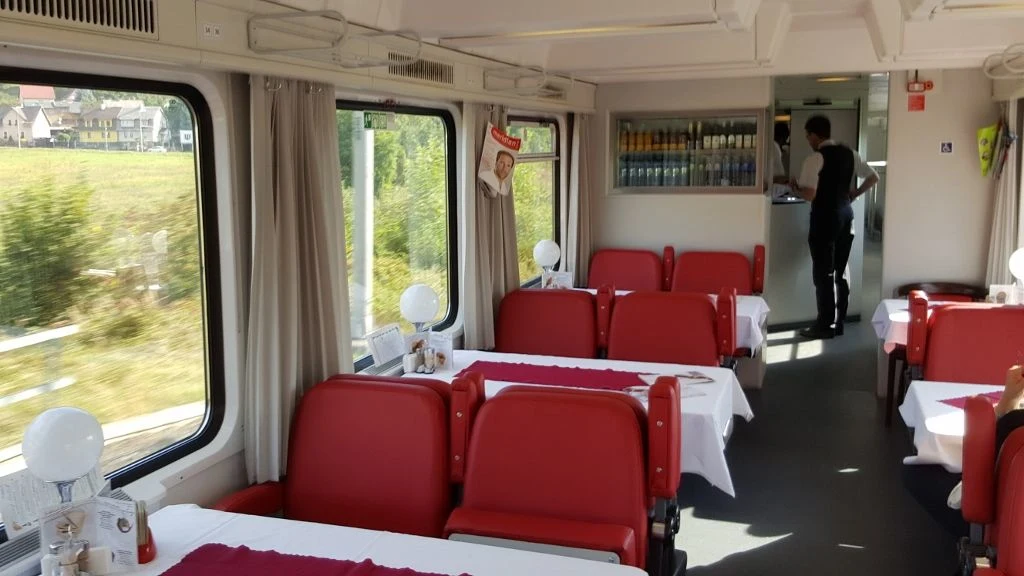
In hindsight I should have had two breakfasts, because there can be few experiences to be had on conventional, not luxury, European train, more fabulous than being served a meal on crisp white tablecloth, while travelling along the banks of The River Elbe between Praha and Dresden.
My quest to find a seat on the right-hand side of the train when heading north, was because it’s the side of the train from which one can experience the charming river views for more than two hours.
However, because the railway used by the passenger trains is on the west bank of The Elbe, the travellers on the left-hand side of the train have a fairly drab journey.
What makes this particular train ride so memorable is that for much of the trip the railway line is slightly elevated so that you don’t have to look through the roadways and vegetation, meaning that the fabulous views are largely uninterrupted.
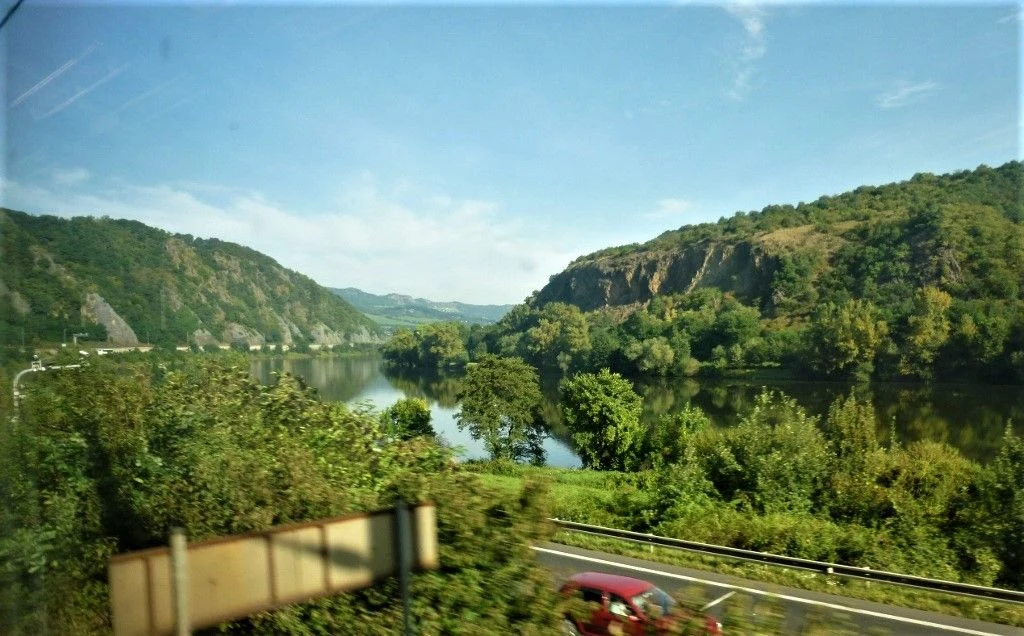
Two of Germany's finest stations
Dresden Hbf, the city’s main station, became something of an icon of German reunification, it had been inevitably damaged in the heavy bombing raids of World War II and had only been patched up while it was located in the GDR.
Hence it compared poorly with the hauptbahnhofs located in what had been West Germany, so it became one of the first major European stations to be given a 21st century makeover.
The reconstructions of multiple stations in recent decades have made it easier than ever before to explore Europe by train.
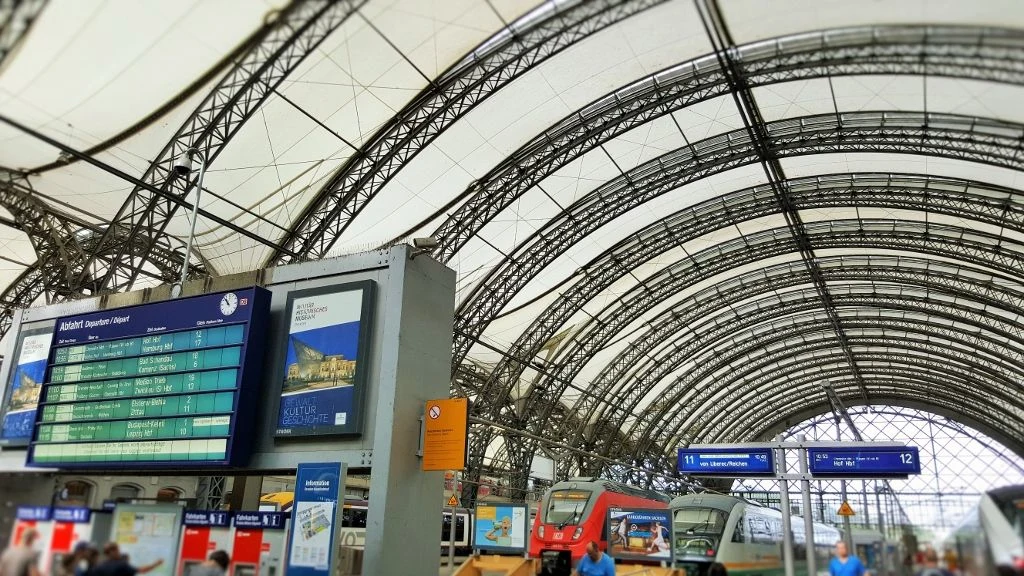
So I was looking forward to exploring the work of eminent British architect, the late Norman Foster, as the redevelopment of Dresden hbf is widely cited as one of his practice’s key projects.
Though the decision was made to restore and enhance the wonderful shell of the station, which is a gorgeous belle-epoque creation of 1898, preservation which included leaving in situ many of the bullet-holes on the station walls.
Dresden Hbf is now doubly unique, its innovative replacement overall roof hasn’t been duplicated elsewhere, and it is also one of the few major European station which has elevated through platforms on both sides of a terminus, so yours truly found it to be rather thrilling.

On to Leipzig
Then less than 90 minutes later I was strolling through another of Europe’s most splendid stations – lucky me!
I’ve searched in vain for an explanation as to why Leizpig Hbf is Europe’s largest station in terms of floor area, though when it was constructed in the early 1900s it replaced two older terminals.
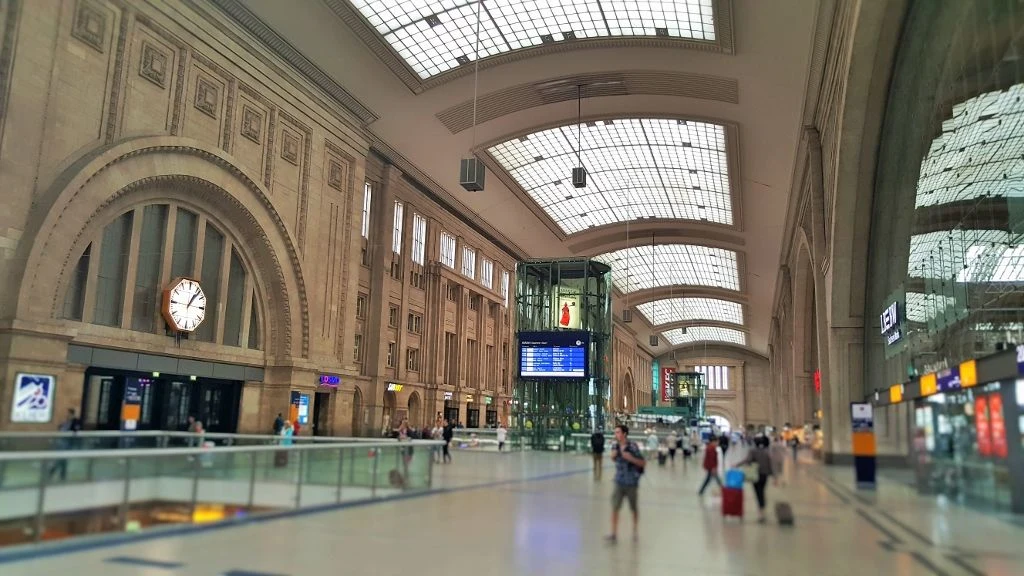
The city has never been a key hub of the European international railway network and trains on the main line between Berlin and Munchen still have to divert off the direct route in order to call at Leipzig.
Today the station supports the doctrine that biggest is best because it was recently cited as Europe’s best large station, primarily because it is easy to use and not because of its awe-inspiring architecture.
What British visitors will find unusual when visiting Germany is that its city centre shops are closed on Sundays.
But in some obscure corner of the national legislation its states that shops at stations can be an exception to this rule.
What those who drafted this law probably had in mind was enabling railway travellers the opportunity to pick up a book or magazine, at the last minute, to while away a journey.
But when Leipzig station was sympathetically reconstructed in 1997, this law was exploited by constructing a mall beneath the station concourse; and as it happens to be enormous, the mall is too.
It also keeps the shops out of the way of the access to and from the trains, a philosophy that is too often overlooked as stations become re-imagined as shopping centres, which trains happen to leave from.
Though as Leipzig Hbf is now, as it has always has been, too big for the train services which use it, some of the platforms at the station are used to house examples of the wonderful older trains which used to depart and arrive there.

Adventures on the ICE trains
I could have taken a direct train from Leipzig to Munich, but in my quest to leave no stone of the European rail network unturned, I was exploiting the freedom of my InterRail pass to add an extra four hours of train travel to my itinerary.
The justification for this madness was a quest to travel on all of Germany’s high speed lines and the Halle/Leipzig <> Erfurt line had just opened
Because a journey on a German high speed line is enhanced by the view down the tracks, from the passenger seats right behind the driving cab, I schlepped down the far end of the long platforms at Leipzig Hbf, where it began to rain.
So my plan to capture the sort of video which racks up 1000s of views of YouTube was looking shakey, but all would depend on the driver not exercising their prerogative to work privately by misting the glass screen which separates them from gawping passengers; but he did.
Then the train got diverted off the final part of the high speed route, so by the time the train was approaching Fulda it was running 25 minute late.
An on time arrival would have given me and my fellow travellers 25 minutes to make connection into the train to Munich.
I’d gambled on breaking my personal mantra for stress-free rail travel of always allowing at least 30 mins to change trains, but it was a connection between two ICE trains in Germany, so I’d taken a chance,
Then as my train neared Fulda station another ICE train heading south appeared beside it on the adjacent track.
My perilous tendency to be too clever by half led me to assume that this must be the train to Munich arriving on time, so with a bit of luck I’d be able to hop from one train to the other like a rail pass ninja.
I raced out of one set of train doors, dashed across the platform, literally jumped on board and began to search for spare seats.
Then I spotted that some of the seats were reserved for travel on to Frankfurt and Stuttgart – yikes this wasn’t the train to Munich!
In my defence these older ICE 1 trains lack the state of the art info screens on the very latest trains, the sort of screens that can tell you everything you’d ever to need to know about being on the train, such as you’re about to pass through Ingoldstadt while travelling at 216 kilometres per hour.
That decision to try and see the view from the front of the train from Leipzig had deposited me at the very far of the platform at Fulda station, so I also couldn’t access the outstanding plethora of information provided at major German stations, intended to ensure that nobody ever boards the wrong train, ever!
Having flung myself back through the doors on to the platform in the nick of time, I was then able to make my way down the platform to take a look at those info screens
I could then wait in the optimum location for access to the first class coaches on the late-running Munich train, breathing several sighs of relief that my trials and tribulations of the day were over.
There was a flurry of announcements being made, though if I’d pricked up my ears I’d have noticed that all the information was solely being relayed in German.
You may assume that this state-of-affairs would be entirely logical at a station in Germany, but at a hauptbahnhof, when all is happening as it should, the information is also translated into English.
However, lengthy explanations only being delivered in German are a red flag, because those English translations are evidently automated, so they can’t explain when unexpected scenarios are occurring.
So if you’re not sure what’s being said it’s worth asking if a fellow traveller can translate the announcements.
On a previous trip I’d been able to discover from a kindly multi-lingual traveller, that a train which was supposed to be heading to Berlin, was instead being diverted to another station where a connection on to the German capital was being provided instead.
When the train arrived it became clear that the news I’d missed was that 2 x ICE-T trains had been substituted for 1 x ICE-1 train for the service to Munchen
ICE trains share a family but the ICE-1 and the ICE-T trains are fairly distant cousins, so the substitution had shattered all the well-intentioned info regarding coach and seat numbers, reservations etc.
2 x ICE-T trains = significantly less 1st class seating than would have been available on the ICE-1 train, so this turned out to be the only occasion on which I’ve ever boarded a train with optional reservations, with a 1st class InterRail pass, to discover that no spare seats were available.
Not a huge drama, I made way to the bistro car for a sandwich and a coffee, but I was missing the view from the train windows, so wasn’t getting to experience this part of the German high speed network.
I’d made a huge diversion off the direct between Leipzig and Munich so that I could take a trip on this high speed line south of Fulda.
Aside from the speed, which can be tricky to ascertain when staring out of the train window, journeys along high speed lines can be a tad dull, but from what I’d seen on YouTube, this line that connects Hannover to Wurzburg, is a thrilling exception to that rule.
The momentum to construct Germany’s first high speed line was the need for the original key north to south rail route to have to twist through the foothills of the Voglesbgerg and Spessart mountain ranges.
The new route would be much straighter, but its trajectory required dozens of massive engineering projects, just on this 115 km section between Fulda and Wurzburg, the train was travelling through 18 tunnels and over 16 viaducts
This rush of racing between darkness and the numerous views from those bridges is a fairly unique rail travel experience, which despite my best efforts, I wasn’t able to fully appreciate.
Though swathes of passengers left the train when it arrived in Wurzburg, so I was only without a seat for less than an hour.

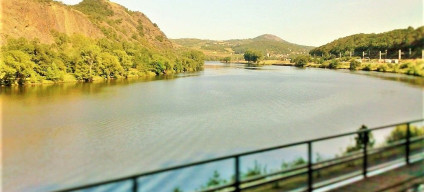

Simon Harper
I wanted to share my passion for train travel and explain how anyone can take the fantastic journeys I have taken.

This is one of more than 100 train travel guides available on ShowMeTheJourney, which will make it easier to take the train journeys you want or need to make. As always, all images were captured on trips taken by ShowMeTheJourney.
This second version of ShowMeTheJourney is exciting and new, so we are genuinely thrilled that you are here and reading this, but we also need your help.
We’re striving not to let anything get in the way of providing the most useful service possible, hence a facility has been set up with DonorBox which can be used to support the running costs and make improvements.
Instead of advertising or paywalls, your financial support will make a positive difference to delivering an enhanced service, as there’s a lot of ideas which we want to make happen.
So if you have found the info provided here to be useful, please consider saying thank you.




